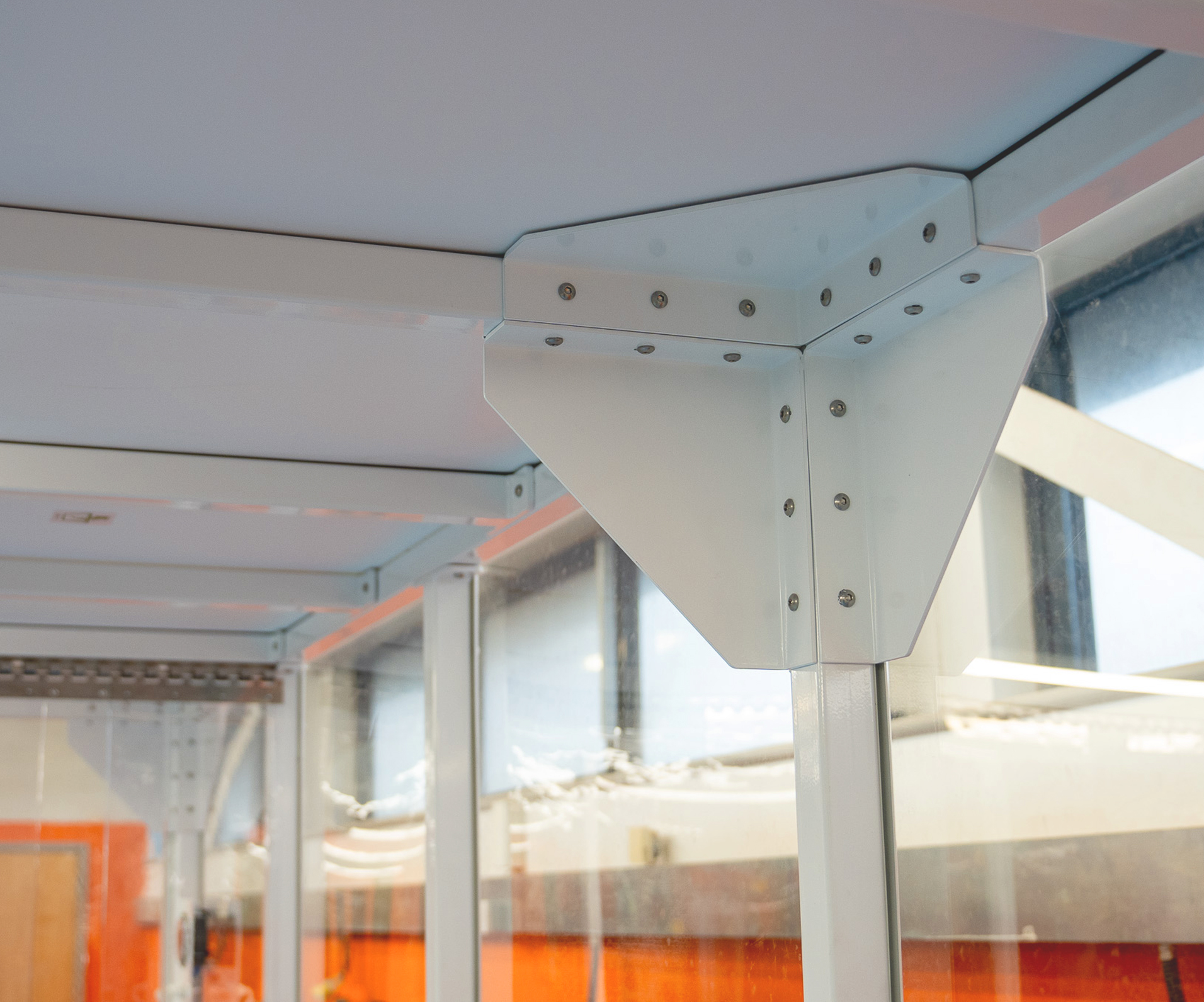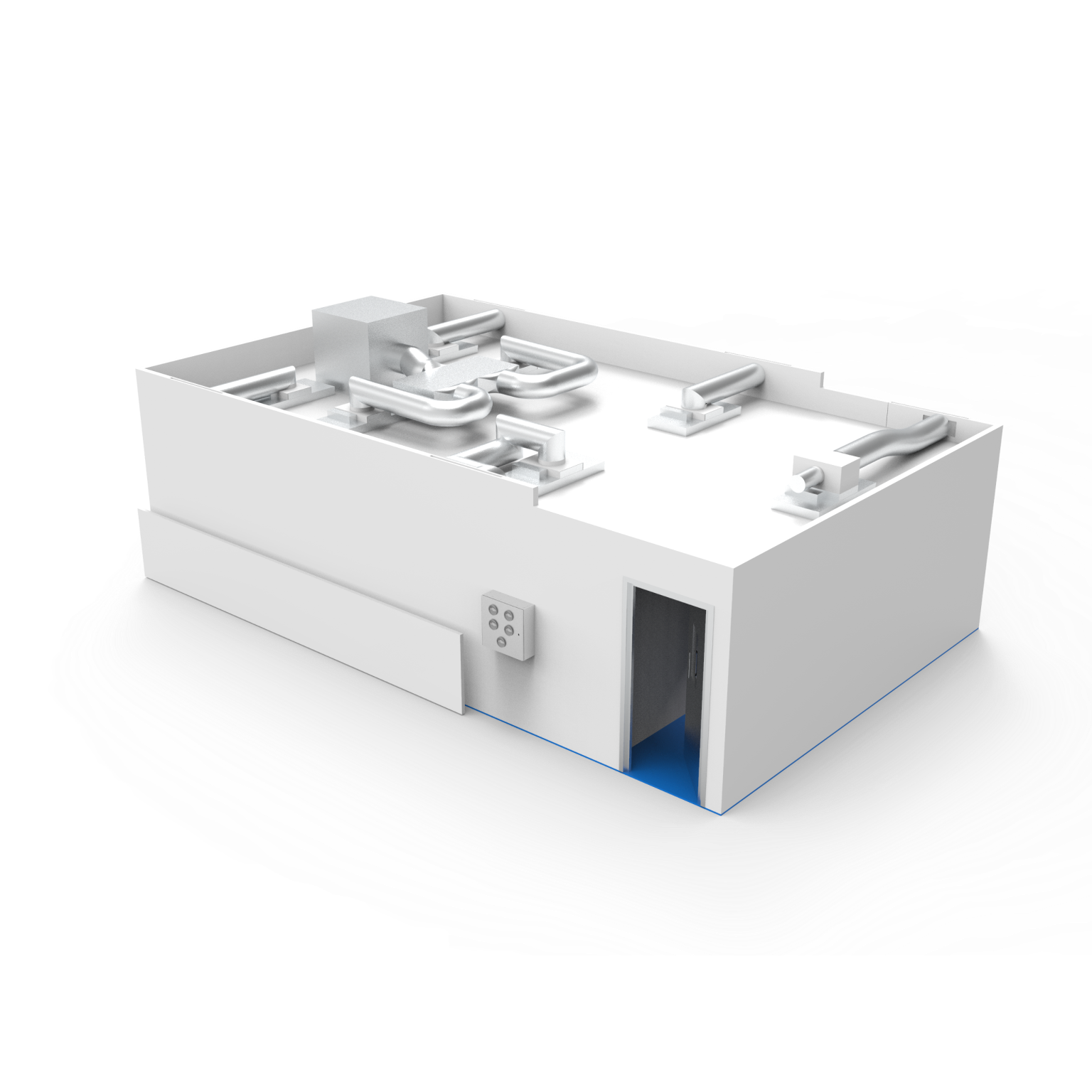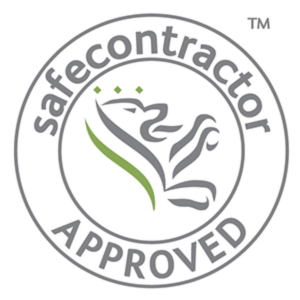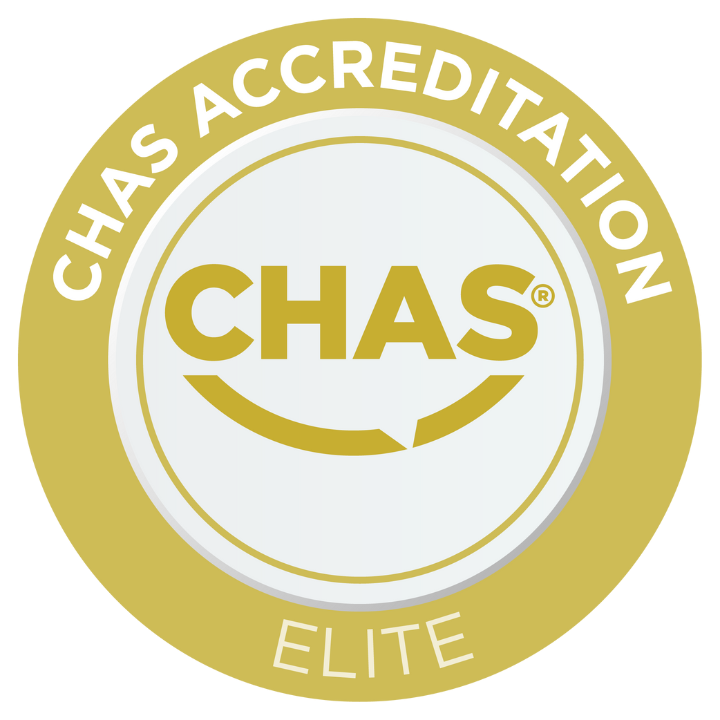Steel vs Aluminium Cleanroom Framing
Those looking to introduce a new cleanroom need to make key considerations across all aspects of the design and build project.
Structural materials, lighting, flooring, layout plans, and air filtration all play a major role in removing contaminations, supporting applications, and maintaining the environment’s integrity. In order to ensure your cleanroom is fit for purpose, it’s crucial to partner with a cleanroom design and build provider who’ll supply you with expertise, quality, and the best solution for your requirements.
In this blog, we’ll specifically focus on cleanroom framing options, how steel compares to aluminium, how they’re used within a cleanroom environment, and how to choose the best option for your controlled environment.

What is aluminium?
Aluminium is a lightweight, malleable, and versatile metal commonly used for food packaging, building and construction materials, vehicle components, electronics, tools, and household items.
Aluminium is made by refining bauxite ore found within igneous rocks into aluminium oxide, then smelting that oxide to extract pure aluminium.
Aluminium is often used during cleanroom construction, typically within the framing stage, to create a controlled environment when combined with your chosen wall panels. The aluminium’s smooth surface is naturally corrosion-resistant due to a protective film formed when exposed to oxygen, making for easy cleaning and disinfection methods.
What is steel?
Steel is an alloy of iron and carbon, producing a high-strength, durable, and resistant metal. Steel is widely used across a variety of applications, making it one of the most popular materials for construction, infrastructure, vehicles, manufacturing tools, surgical instruments, and furniture.
Whilst steel is an alloy of iron and carbon, combining other elements such as chromium, nickel, or manganese produces different types of steel with varying properties, like stainless steel.
Steel is a popular choice for cleanroom frame construction due to its high strength and increased durability, leading to long lasting and sturdy build types. The use of more refined steel types, such as 316 stainless steel is a common choice for cleanroom furniture used within GMP-compliant environments, with superior corrosion, heat, and abrasion resistance.
The key differences between steel and aluminium
1. Durability and strength
Steel is renowned for its durability and overall strength, with its carbon content making it particularly tensile and resilient to stress and impacts. However, aluminium excels in strength-to-weight ratio, with 1/8 compared to steel’s 1/16, meaning aluminium can sustain the same load yet weight half as much as a steel structure.
As steel is an inorganic substance, it won’t be damaged from insects or fungal growth, unlike aluminium, which is at-risk to fungi adhering to the surface, destroying its protective film. Additionally, steel has a longer lifespan with an average of 150 years, whereas aluminium has a shorter lifespan with an average of 50 years.
For cleanroom construction, whilst aluminium might be lighter which can provide short-term benefits including lower cost and easy transportation, in the long-term, steel options can provide you with x3 the expected lifespan and resilience to fungal damage, creating a more stable, future-proof investment.
2. Heat and corrosion resistance
Steel offers higher heat resistance when compared to aluminium, with a melting point in the range of 1,370ºC – 1,510ºC. Aluminium’s melting point is much lower, at 660ºC, and becomes soft at temperatures above 400ºC.
When it comes to corrosion resistance, aluminium has a natural, self-protecting layer that prevents rusting, unlike raw steel. Steel is more susceptible to rust and corrosion when exposed to a moist environment, however, there are multiple coating options applicable to steel that prevent corrosion and protect the metal’s surface. Stainless steel is more corrosion-resistant than both raw steel and aluminium due to the chromium content producing a passive protective layer exceptionally resistant to rust.
Within cleanroom environments, powder-coated steel is typically used as it offers advanced protection against corrosion and resistance to harsh chemicals when compared to aluminium and raw steel, leading to increased longevity.
3. Flexibility and malleability
Aluminium is extremely malleable, especially when compared to steel. Aluminium is easy to bend, stretch, and shape without breaking, making it ideal for intricate designs and easily drawn into wire or rolled into foil.
Steel is less malleable and more rigid than aluminium, however, due to its strength, weight, and density, steel can better retain its shape, leading to longer lasting structures.
Each industry requires a different cleanroom; for instance, injection moulding applications typically opt for softwall cleanrooms on castors for easy moveability over various pieces of machinery. With mobile structures made using aluminium, joints and bolting points might flex with movement over time, causing the malleable framing to become loose, potentially shedding particles as it does. However, cleanrooms made using steel will be more resistant to damage and provide a more solid structure.
4. Upkeep and maintenance
Raw steel is more prone to corrosion and requires higher levels of upkeep. However, cleanroom environments typically use stainless steel, and when compared to aluminium, the former is superior when it comes to upkeep and maintenance.
Stainless steel is easy to clean and can often withstand the harsh chemicals required as part of a cleanroom’s cleaning regime. Its non-porous surface doesn’t hold dirt or bacteria easily, otherwise a major concern in controlled environments.
Whilst aluminium’s smooth surface makes for easy cleaning, it typically requires milder disinfectants and solutions as harsher chemicals can scratch or tarnish the surface, damaging its naturally corrosion-resistant protective layer.
5. Sustainability and environmental impacts
Both steel and aluminium have sustainability pros and cons across their entire lifespan, from extraction, production, transportation, use, and recycling.
Aluminium has a low-energy recycling process that doesn’t damage its quality and durability. In fact, recycling aluminium uses 95% less energy than its original production. According to the Aluminium Association, almost 75% of the world’s produced aluminium is still in use today.
Steel has a more intense production process, with extensive mining and energy resources. However, some still debate that steel has higher levels of sustainability across other areas. Like aluminium, large volumes of steel are recycled. However, unlike aluminium, steel has a larger lifespan, therefore mitigating the need for frequent replacements.
6. Cost-effectiveness
Generally speaking, raw steel is more cost-effective than aluminium. However, different types of commercial-grade steel (like stainless steel) can have increased costs.
In its raw form, aluminium’s higher cost is partly due to its refining process, yet aluminium’s lighter weight make it more cost-effective, allowing you to get higher volumes for the same price.
The use of steel and aluminium in cleanrooms
Reducing particulates and the risk of a contamination incident is the top priority in all cleanroom environments. Everything from its design, operations, and processes needs to embody a risk-based approach to contamination control, including its construction materials.
The shell of a cleanroom is commonly made from either aluminium or powder-coated steel frames, supporting its ceilings, walls, flooring, and any mounted equipment.
Pros of using steel for cleanroom construction:
✅ Durable and high strength
✅ Long lifespan and easy to repair
✅ High heat resistance and low electrical conductivity
✅ Corrosion resistant (powder-coated/stainless steel)
✅ Easy to clean and resistant to harsh chemicals
Pros of using aluminium for cleanroom construction:
✅ Malleable and lightweight
✅ High strength-to-weight ratio
✅ Naturally corrosion resistant
✅ Cost-effective
✅ Easy to clean with milder chemicals
Overall, aluminium cleanrooms are a great option if you require a cost-effective, lightweight controlled environment ideal for organisations with less intensive cleaning regimes and looking to achieve environmental-sustainability targets.
Steel cleanrooms (specifically powder-coated steel) are perfect for those in need of a durable, long-term environment that can withstand frequent cleaning and disinfectant regimes, and resistant to heat, electricity, and corrosion.


Start a project with us
At Connect 2 Cleanrooms, we design and build a range of controlled environment using durable, powder-coated stainless steel structures. From mobile softwall cleanrooms to fully integrated monobloc facilities, our priority is providing our clients with solutions that deliver quality, resilience, compliance, and reliability. With over 20 years of experience, we believe that stainless steel offer the performance and longevity our clients depend on.




